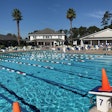Source: National Athletic Trainers' Association
With collegiate football preseason practices underway, the Journal of Athletic Training, NATA’s scientific publication, has just posted online first and ahead of publication a timely study, “Exertional Heat Illness in American Football: When is the Risk Greatest?": https://natajournals.org/doi/full/10.4085/1062-6050-51.8.08.
Study Background
· Exertional heat illnesses (EHIs) are among the many factors that sports medicine professionals, including athletic trainers, must contend with when supervising the participation of the college student athlete in preseason football practices. In particular, exertional heat stroke and heat exhaustion are serious illnesses that can be debilitating and potentially life threatening if appropriate prevention and management strategies are not used.
· From 1960 to 2009, 123 cases of heat-related deaths were reported among American football participants in the U.S. A total of 24 deaths were reported from 1975-1994; however, over the next 15 years, 42 deaths occurred. The five-year period from 2005-2009 was responsible for the greatest number of heat-related deaths (18) in college and high school athletes in any similar period over the previous 35 years.
· From 1988-2004, the NCAA Injury Surveillance System reported 1,687 EHI occurrences.
Study Objectives
· To evaluate the association among preseason practice day, session number, and wet bulb globe temperature (WBGT) on the incidence rates of EHI.
Participants
· Sixty colleges and universities representing five geographic regions of the United States and NCAA football players.
Results
· A total of 553 EHI cases were reported. The first 14 days of the preseason period had the highest rate of EHI, with the greatest risk during the first 7 days. The risk of EHI increased substantially when the WBGT was 82.1 degrees F or greater. Sports medicine personnel, including athletic trainers, should take all necessary preventive measures to reduce the risk of EHI during the first 14 days of practice or when environmental conditions are greater than 82.0 degrees F.































